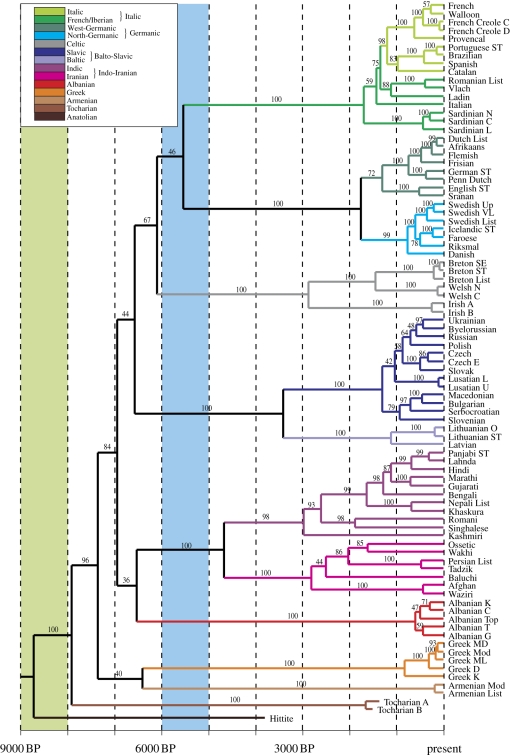Figure 1.
A dated phylogenetic tree of 87 Indo-European languages. The tree is a consensus tree derived from the posterior samples of trees in the Bayesian analyses reported by Gray & Atkinson [32]. The values on the branches are the posterior probability of that clade. The root age of the tree is in the age range predicted by the Anatolian hypothesis. This figure also shows an interesting point that we had noted, but not emphasized, in our initial paper—while the root of the tree goes back around 8700 years, much of the diversification of the major Indo-European subgroups happened around 6000–7000 BP. This means that both the Anatolian and the Kurgan hypotheses could be simultaneously true. There was an initial movement out of Anatolia 8700 years ago and then a major radiation 6000–7000 years ago from southern Russia and the Ukraine. It also means that the intuition shared by many linguists that the Indo-European language family is about 6000 years old could be correct for the vast majority of Indo-European languages, just not the deeper subgroups.

